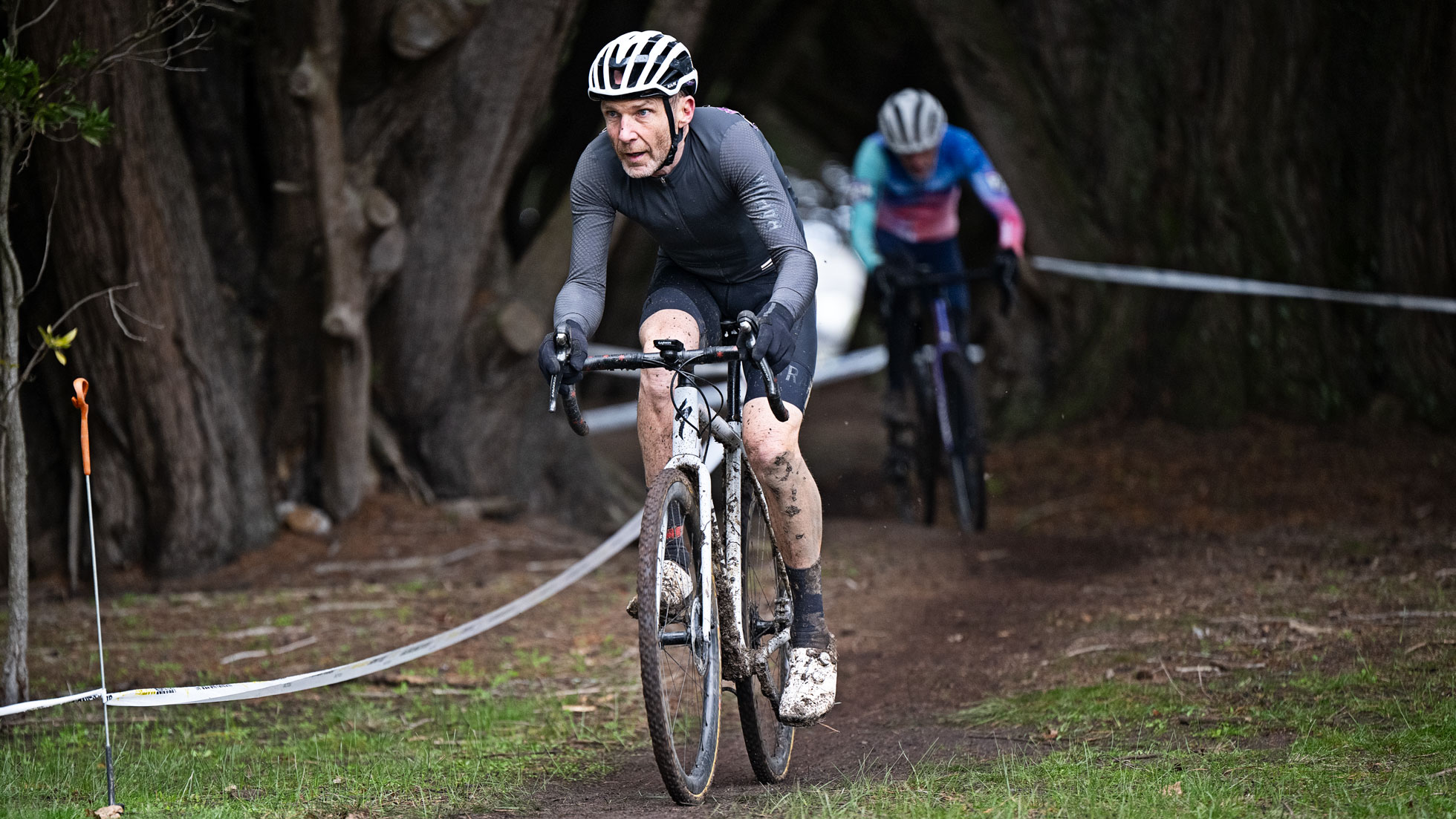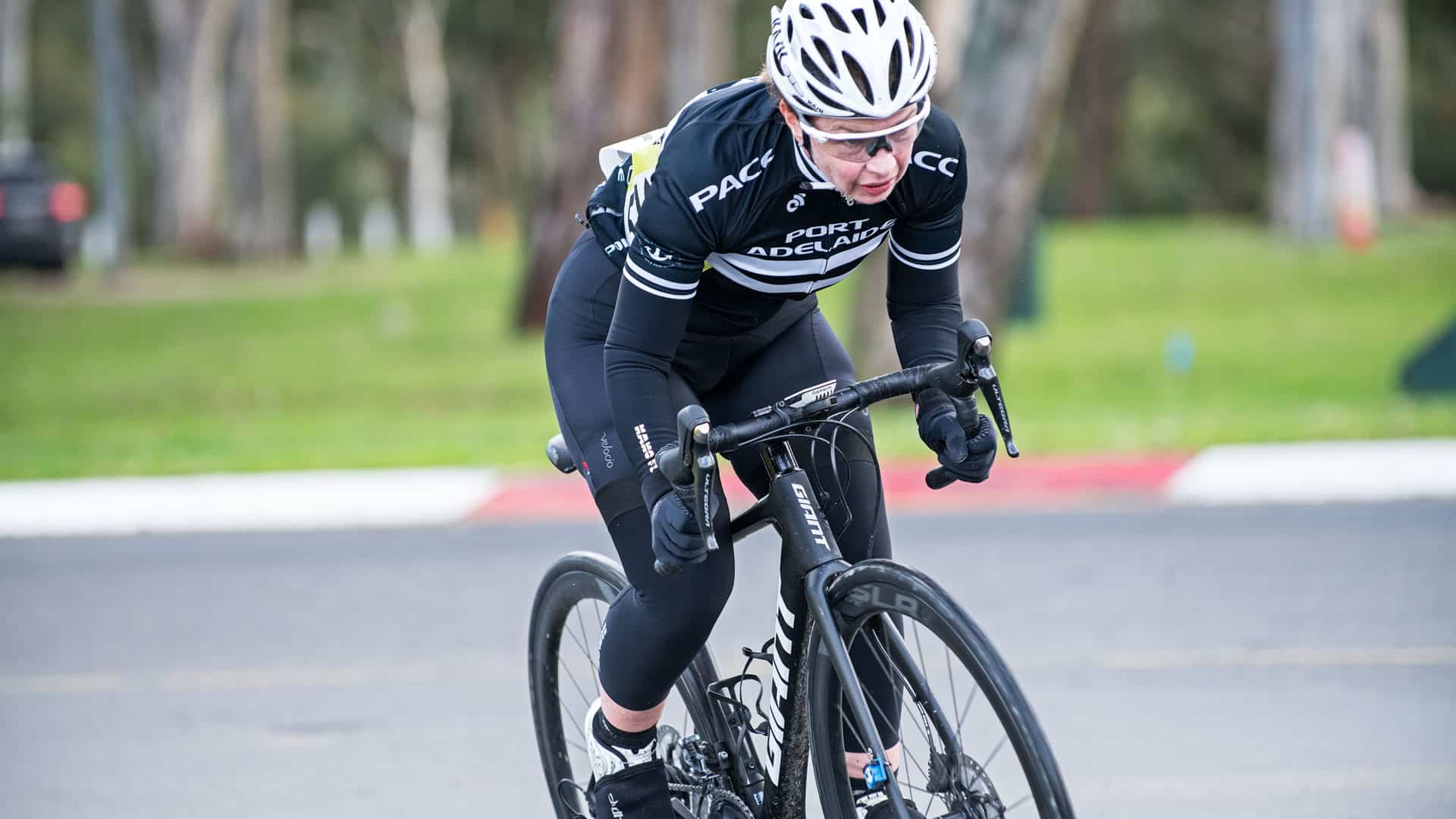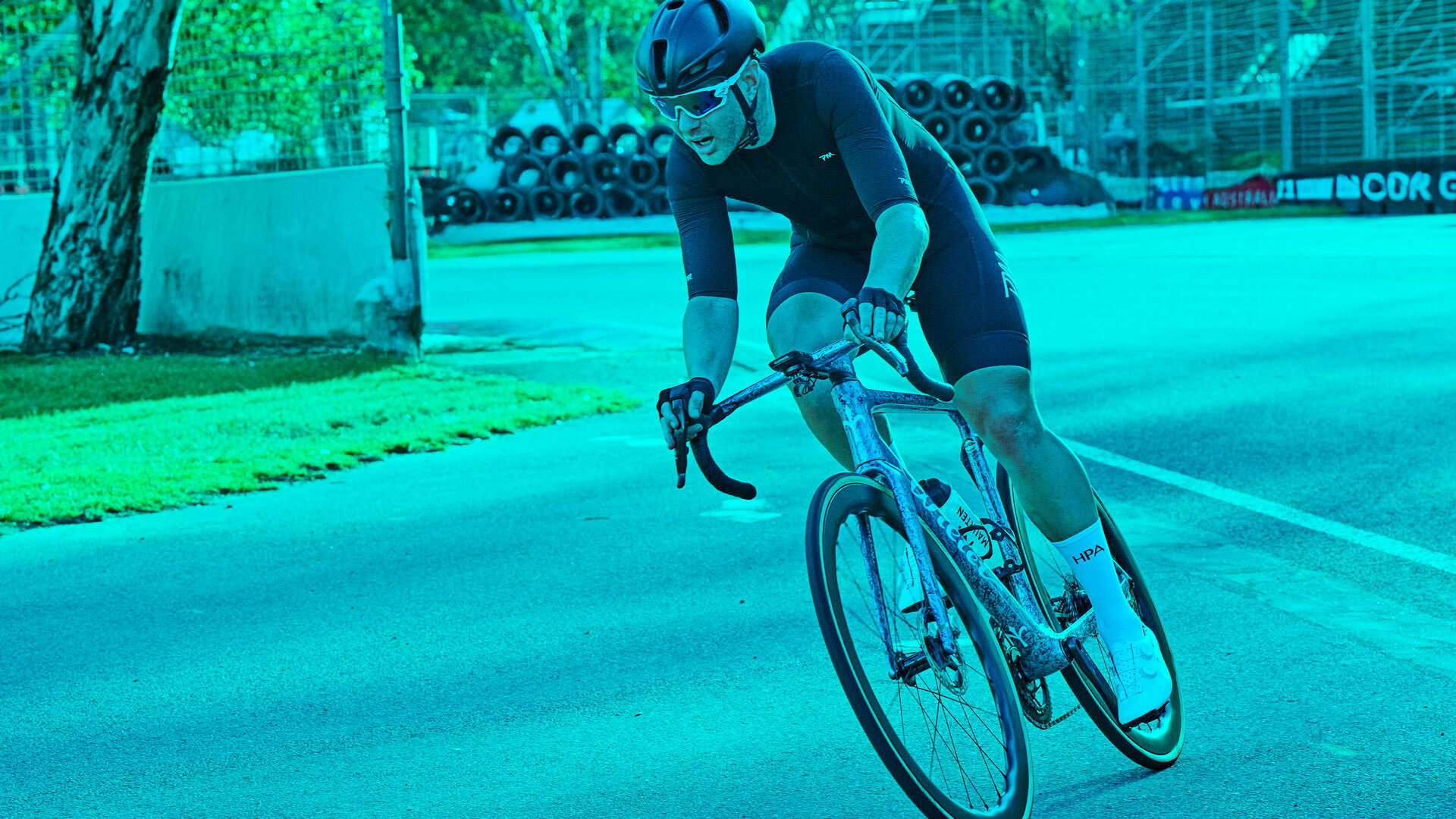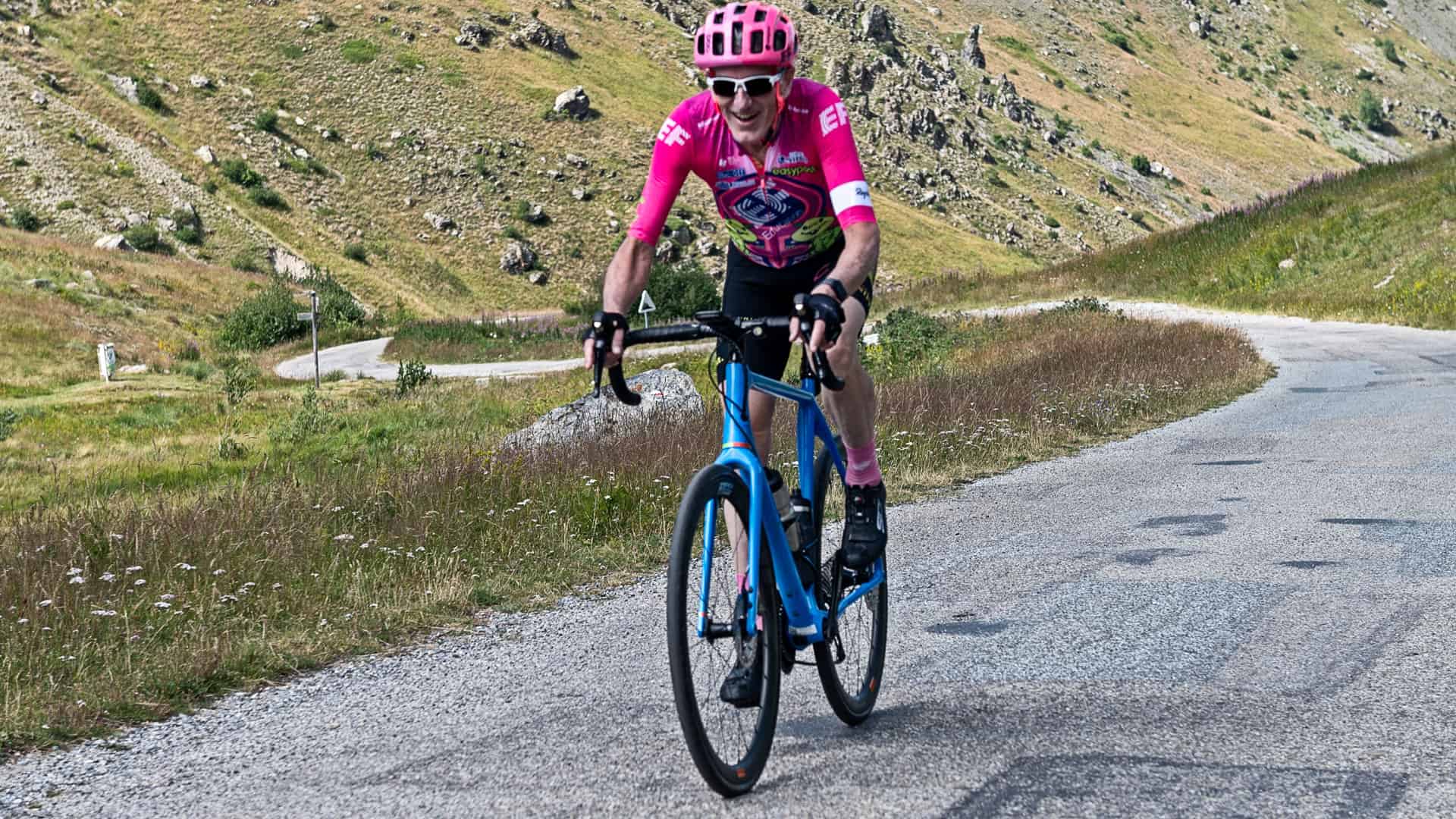In this video I cover off some of the legalese associated with wearing of helmets, how to properly fit a helmet, what I personally look for when choosing to buy a helmet and how I wear my helmet in different temperatures.
Video Transcript:
Hi and welcome to Cycling-Inform, Cycling Tips. My name is David Heatley and today I am going to be talking about helmets. Now I’ll be covering off three things. I’ll be covering off some of the legalese associated with wearing of helmets. I’ll be talking about how to properly fit a helmet, and finally, I’ll be talking about what I personally look for when choosing to buy a helmet {and how I wear my helmet in different temperatures}
Back in the 1980s, there were no laws governing the wearing of cycling helmets so my personal choice of headwear was the humble cycling cap. Now at the same time things got pretty serious when we were cycle racing. We had to put one of these on. Now they’re affectionately called a “hairnet” and they really only provided very limited amount of protection, so enough about the history lesson. Let’s fast forward to today.
There are laws governing the wearing of cycling helmets based on the state and country that you’re riding in. Here in Australia and New Zealand, you are legally required to wear a helmet while you are riding your bike at all times and the helmet must comply with the Australian/New Zealand helmet standard. This standard can be identified by a sticker located on the inside of your helmet.
In recent times, you can buy a helmet off the Internet from overseas. Now the issue of that is that these helmets are not compliant with the Australian and New Zealand helmet standard. They usually comply with the helmet standard of the country of origin.
The helmets usually look the same and people usually think that they’re identical but there are some subtle differences that make profound effects on the way that the helmet behaves. Usually, a lot of it’s got to do with the material that the helmet’s made out of. Usually the helmets coming from overseas have a foam that is a different density to the ones they use against the Australia and New Zealand standard.
The other issue is relating to insurance. If you are found to be wearing a helmet that’s not Australia and New Zealand-certified here in Australia and New Zealand, then there may be issues when it comes to an insurance claim if you have an accident. When it comes racing here in Australia, both the Australian Veterans Cycling Council and Cycling Australia won’t allow you to race unless you are wearing an Australia/New Zealand-standards helmet.
I am going to talk about the correct fitting of bicycle helmets. Bicycle helmets come in various sizes for any particular model. To figure out what size is good for you there is usually a dead giveaway in that they have head measurements on the box or the helmet itself. All you need to do is measure the circumference of your head and then translate those measurements on to the measurements that are on the box and choose the right-sized helmet.
There is a less fancy way of doing that and all you need to do is put the helmet on and then just check to see whether your hand is slipping underneath the helmet. If the helmet is too big, you’ll find that you get quite a bit of movement backwards and forwards across your head and you’ll be able to slip your hands in between your head and your helmet.
The next step is adjusting the helmet to get it fitting correctly. You want put the helmet on your head and then there’s usually a tension adjustment either at the back of the helmet or on the top of the helmet to adjust to tighten up the head strap and just have it so it’s sitting firm on your head. Then you want to adjust the straps so that the buckles or where the strap joins together is around either your cheek bone or slightly lower from your cheek bone and then adjust the strap itself so there’s a little bit of freedom underneath your chin but not a lot.
The idea is that you want to check that the helmet is firmly attached to your head but not so tight that it’s strangling yourself and not so loose so that it’s going to fall off when you hit something.
I am going to talk a little bit about my personal helmet choice. I’ve got three helmets. I’ve got this Bell helmet that I bought in a bike shop in Adelaide. I’ve got this Lazer helmet that I recently bought in Adelaide. Every time I go to the tour down under I seem to buy helmets, and then I’ve got this Giro helmet that I bought from a local bike shop in Melbourne about two years ago.
Now you’ll notice the first thing about this helmet is that they’re all white or silver, and I prefer white or silver helmets because it helps create more visibility or more color contrast on the road. Generally, people driving in cars are on a road, the ride is usually black or dark, and if you’re wearing something that is contrasting against the background that you are riding against then you’re more likely to stand out, so white or silver helmet is obviously more visible at night than a black helmet.
It’s also more visible during the day. That’s one of the things that I look for in a helmet is I usually go for a predominantly white helmet. I also like a helmet with quite a few insulates. I have a tendency to get quite a hot head. That’s temperature-hot, not angry-hot. I suffer from sweat dripping into my eyes, down my glasses and causing me quite a bit of discomfort.
A couple of ways that I get around that is to have a helmet with a lot of insulate, or alternatively I just set up a cycling cap underneath my helmet, like that. What that does is that, as my head sweats, the sweat runs into the helmet and then drips off the peak of it so that avoids the sweat running into my eyes and causing me that discomfort.
When it gets a bit colder I usually add the ear warmers to my configuration. I’ll put on one of these ear warmer things and it just keeps my ears nice and toasty and then put the cap over the top of it. Then I put the cycling helmet on top of that, and that’ll keep my ears nice and warm on those colder days and my head warm as well.
When it gets really cold, I’ve got a special little beanie hat that I wear on the really cold days and it’s just a hat like this. It’s made by Macpac, this particular one. That acts kind of like the last configuration that it’s more thermal so it’s a little bit more warmer and then I just put the helmet on top of it and that’s for those super-cold days out there in the rain or when it gets below two or three degrees. That’s the sort of configuration that I normally go for.
One great thing about the Giro helmet is that it has this insert that comes with it that effectively does a very small job as a cycling cap. It’s an insert that inserts into the helmet and just acts as a bit of insulation layer to keep your head warm on those colder days, and usually you can suffer from a bit of brain freeze when you’re descending down a hill after a long climb on those colder days. I find that during winter that sort of configuration I’ll have, I’ll put that in and that’ll keep my head warm for those sort of mildly cold days, and then obviously I’ll configure it up with the other configurations depending on the temperature.
The other important thing about helmet design that I like to look at is the glass displacement. I’ve got a pair of Oakley Radars and if you look at photographs of me riding, sometimes I ride with this sort of configuration here. I’m looking for a helmet that I can fit the glasses into quite easily and then get access to them so that I can put them onto my head like that. There’re a lot of helmets that allow you to do that.
This helmet is very good, but I noticed that the recent helmet that I’ve got, the Genesis helmet, that’s a little bit different. The Radars don’t fit in them very well at all, but Jo just got one these helmets and she just sits it up like that. It’s kind of a reverse look. You get quite creative with it. There are a few holes in the top of the helmet but again it doesn’t feel the glass is going to really sit there, though. It feels it might bounce out. I’ll look for a helmet where I can at least get my glasses in there and they’re locked-in fairly well.
On really hot days, the top of my head is prone to getting sunburnt, so by wearing a cap underneath the helmet on really hot days, the sweat that is coming off my head will go into the cap and help cool down my head, but it’ll also prevent the top of my head from being sunburnt from the holes in the top of the helmet, with the sun coming down into the helmet. That’s another reason for putting a cap on underneath your helmet.
I hope that’s been useful. I hope you have a better understanding of the legalese associated with helmets, how to setup a helmet on your head, and the sort of configurations and what to look for when buying a helmet.
If you’re interested in finding out a little bit more about helmets, we do have some additional links at the bottom of this article that cover off some of the topics that we’ve talked about today.
Links
Follow us on Twitter
Like us on Facebook.
More information:
Helmet Standards Across the world
■AS/NZ 2063
■ANSI Z90.4;
■Snell ‘B’ or ‘N’ series;
■ASTM F-1447.
■Canadian CAN/CSA-D113.2-M;
■U.S. CPSC standard for bicycle helmets;
■European CEN standard for bicycle helmets (EN1078)
Wikipedia – Bicycle helmet
http://en.wikipedia.org/wiki/Bicycle_helmet
Bicycle Helmets : A Scientific Evaluation {PDF} – W.J. Curnow 2008
http://www.cyclehelmets.org/papers/p787.pdf
Ride No magazine – Put a lid on it – 3 April 2012
Ride On decided to take a closer look at what lies behind those standards, and in the process uncovered a fascinating insight into the stringent manufacturing tests our helmets must pass.
http://rideons.wordpress.com/2012/04/03/put-a-lid-on-it/
What are the benefits of bicycle helmets? – 07 Oct 2012
A new study reports the rate of hospitalisations for cycling-related head injuries in NSW has fallen markedly and consistently since 1990. The authors say it’s due to helmets and infrastructure
http://blogs.crikey.com.au/theurbanist/2012/10/07/what-are-the-benefits-of-bicycle-helmets/
Australian helmet standards – What you need to know 17 April, 2013
what are these standards? And what’s involved in testing a helmet to see if it complies with Australian standards? How do Australian standards compare with other jurisdictions? And will wearing a helmet from overseas put you at risk, legally and in terms of your safety?
http://cyclingtips.com.au/2013/04/australian-helmet-standards-what-you-need-to-know/
Assessing the level of safety provided by the Snell B95 standard for bicycle helmets – 1 Jan 2004
Discusses whether the differences between the technical requirements and quality assurance approaches used by the Snell B95 and AS/NZS 2063:1996 standards for bicycle helmets are likely to result in significant differences in the level of safety provided to the user.
http://www.infrastructure.gov.au/roads/safety/publications/2004/Bic_Crash_6.aspx





Leave A Comment